| Columns Retired Columns & Blogs |
Listening #57 Page 2
We've also spoken of transformer impedances—numbers that describe their primary and secondary coils—but those, too, can't be understood in isolation of the gear with which these coils will be used, or even each other. It's possible to describe the DC resistance of a coil simply by measuring it, but it isn't possible to describe the AC impedance of a coil without observing it at work, in a complete circuit with an exemplary source or load. Consequently, the impedance specifications published by transformer manufacturers should be thought of abstractly: For the most part, primary impedance specs are little more than numbers used to describe the source load to which that primary is best suited. The 3-ohm label on the input side of a Tamura TKS 83 transformer, for example, does not mean that the primary presents a 3-ohm load. (If it did, there'd be no way to explain why a 5-ohm Koetsu Black exhibits voltage gain, rather than loss, when driving it!) It means that the primary is appropriate for use with a source of approximately 3 ohms.
Primary colors
When considering a step-up transformer, the really important impedance characteristic is the impedance ratio between the primary and secondary windings. The difference in impedance between the input and output sides is, in fact, the reason a step-up (or step-down) transformer works at all: The greater that difference, the greater the voltage gain. Or, looked at from a mathematical point of view: Voltage gain, expressed as a factor, is equal to the square root of the impedance ratio of the primary and secondary coils. If the primary impedance is 40 ohms and the secondary impedance is 4k ohms, then the impedance ratio is 100 and its square root is 10. Thus, a 0.5mV signal at the cartridge's output pin becomes a 5.0mV signal at the transformer's output jack.
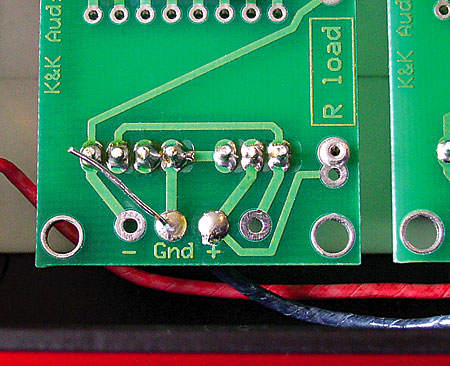
Because of that, the turns ratio of the transformer windings can also be used to predict voltage gain: It's also the square root of the impedance ratio—and equal to the gain factor. If the transformer in our hypothetical example has 20 turns of wire on its secondary, you can rest assured that its secondary has close to 200 turns.
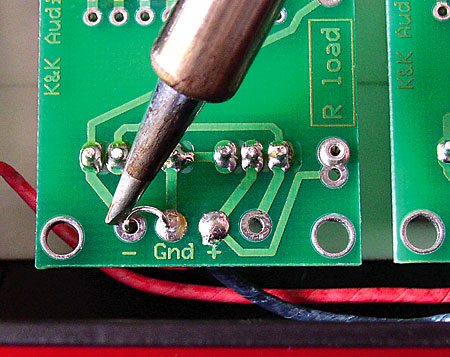
There's more: By multiplying 20 times the base-10 logarithm of the turns ratio—which is the same as multiplying 20 times the log of the square root of the impedance ratio—you come up with the transformer's gain in decibels. The logarithm of 10 is 1, and 20 times 1 equals 20—so that one works out to 20dB. The log of 5 is 0.699, and 20 times that is 13.98, which we round up to 14dB—meaning that a turns ratio of 5 produces 6dB less gain than a turns ratio of 10.
Now let's take the math one step further: In addition to knowing how much gain a given transformer provides, we also need to determine the load impedance it will present to an MC cartridge when used with a typical preamplifier. Once again, we need to know the trannie's impedance ratio—which can be determined by squaring its turns-ratio/voltage-gain factor. Then, by dividing the transformer's impedance ratio into the preamplifier's input impedance, we'll learn the load impedance as seen by your cartridge. Assuming an input impedance if 47k ohms, a transformer impedance ratio of 100 will result in a cartridge load of 470 ohms.
And look what happens when we plug different numbers into those formulas, for which exercise we'll imagine a step-up transformer with a fixed secondary coil and a primary coil that has multiple taps. Let's say our hypothetical trannie has input selections for three different voltage-gain "settings" of 5x, 10x, and 20x. If we estimate a value of 4k ohms for that fixed secondary, we'll see that the 20x inputs correspond to a primary with an impedance of approximately 10 ohms—and that, when used to drive a 47k ohm preamp input, the overall cartridge load will be a perfectly appropriate 117.5 ohms.
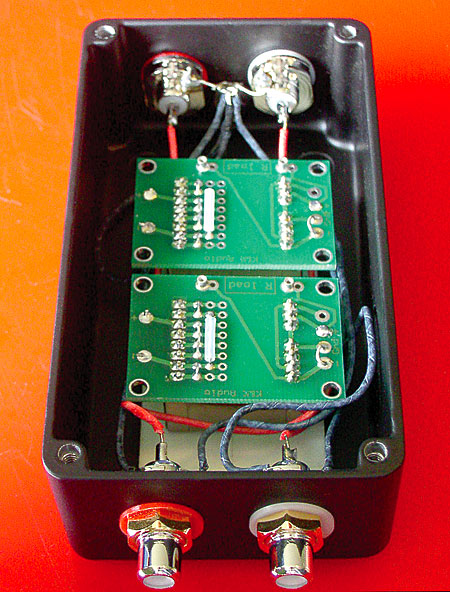
For their part, the 10x input would have a primary impedance of 40 ohms and an cartridge load of 470 ohms, and the 5x input would correspond with a primary impedance of 160 ohms and an overall cartridge load of 1880 ohms.
And that's as it should be: All other things being equal, higher-output cartridges tend to have more coil windings than their lower-output brethren, and thus require a combination of lower gain and higher load impedances. Low-output MC cartridges tend to have fewer windings (less than two dozen per channel in my 0.3mV Miyabi, for example!), and thus require both higher gain and lower load impedances. Step-up transformers do all of that—naturally.
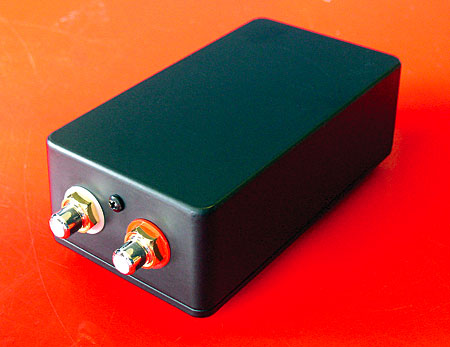
Exceptions might include cartridges that combine high-impedance coils with low output voltage, or low-impedance coils with relatively high voltage, often by using magnets that are notably weaker or stronger than average. The only one I know of for sure is the Allaerts MC2 Formula One, whose 32-ohm coils produce an output of just 0.15mV, thus confounding the usual formula. (The opposite would probably be more daunting, whereby an appropriate load impedance could produce excessive gain, and audible overload distortion at the preamp stage.) Here, as elsewhere, careful listening is the only real substitute.
Hats off to Hakko
The transformer I described a few paragraphs ago is more than hypothetical: Trannies with fixed secondaries and multiple primary taps are common as stones, and one such product is among the most recommendable phono products that I've tried in recent years.
K&K Audio of Apex, North Carolina (www.kandkaudio.com), which distributes the Swedish-made Lundahl transformers—used by Shindo, VAC, Rowland, and other notables, in certain of their products—offers the very thing, with selectable primary taps for 14dB (5x), 20dB (10x), and 26dB (20x) of gain. The K&K trannie is built into an aluminum-alloy box with a black powder-coat finish, with rhodium-plated Cardas connectors and silver hookup wire from DH Labs. The shielded transformers themselves are Lundahl's amorphous-core LL9206 units. The price? Just $335, direct from the factory. I can think of one place that wouldn't sell even a picture of a transformer for that little.
It gets better: For only $275, you can buy the same thing in kit form. I've just finished building one for myself, and not only is it eminently doable, it's downright fun. The only requirement, apart from a few common hand tools, is a decent-quality, temperature-controlled soldering iron. Without such a thing—or, at the very least, without a fair amount of soldering experience—you risk applying too much heat when hooking up the transformers themselves, even to the point of spoiling an internal connection. For this and other delicate work, I recommend the Hakko 936 soldering station, which you can buy brand-new for less than $100.
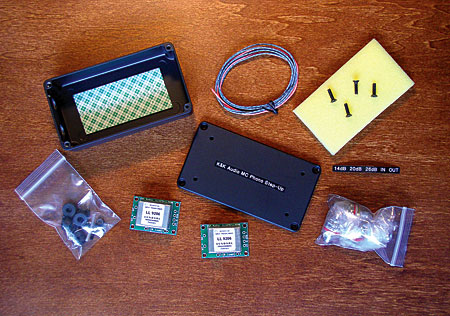
Before you set about building the K&K step-up transformer, you'll want to decide which of the three gain settings is appropriate for your cartridge—although you can always take the thing apart and redo the connections at a later date. If you think of the Miyabi 47 (1 ohm) as low, the Denon DL-103 (40 ohms) as high, and the mighty Ortofon SPU Mono (100 ohms) as crazy high, you'll have no trouble working out the rest.
Mechanical assembly is simple, requiring nothing more difficult than scraping some paint away from the grounding point with a hobbyist's knife, and mounting the input and output jacks with a couple of wrenches. Electrical assembly is more challenging, but surely not outside the abilities of the average hobbyist. Again, make your solder joints cleanly—and quickly. Use a clean tip, apply no more heat than your solder of choice requires, and be sure that your connections are mechanically sound before soldering.
K&K's instructions are good, and the penultimate step is something we should all take note of: Once everything is wired together, feel free to check your work with a multitester—but if you do so, keep in mind that you're also magnetizing the transformer core in the process, albeit very slightly, requiring additional run-in time before the finished product sounds its best.
One more caution, on more or less the same note: Unless you know for certain that your multitester is a modern, low-current type, you should not under any circumstances use it in an attempt to measure the DC resistance of a cartridge's coils. Some coil wires are exceptionally fine, and the current produced by old-style multitesters in particular is enough that the coil will act like a fuse and burst: a tragedy in one act.
So then: How did my finished transformer project sound? I wired my K&K trannie for the high-gain/low-load-impedance setting, so I could use it with the Koetsu Black, and while it's been in use for just a few days as I write this, I'm already very impressed. It's dynamic as all hell—indicating a good impedance match, if nothing else—and the midrange is clean and richly textured. As a bonus, the only way I've been able to make it hum in my system has been to hold it really close to my preamp's power transformer, at a screwy angle; in normal use, it's as quiet as . . . well, a mouse.
I expect that the sound of the K&K step-up transformer will continue to open up over the days and weeks to come. In the meantime, I'm gathering up as many other trannies as I reasonably can—not for a shoot-out, which would be pointless and counterproductive, given how context-specific all these things are, but as a sort of annotated survey. Among the units on hand or expected are the VAS MC-One, the Auditorium 23 Hommage, the Auditorium 23 standard (Denon version), the Audio Note AN-S4M, the Koetsu (yes, they still make one), and the ever-popular Many Others. Read about them here next month.
- Log in or register to post comments




































